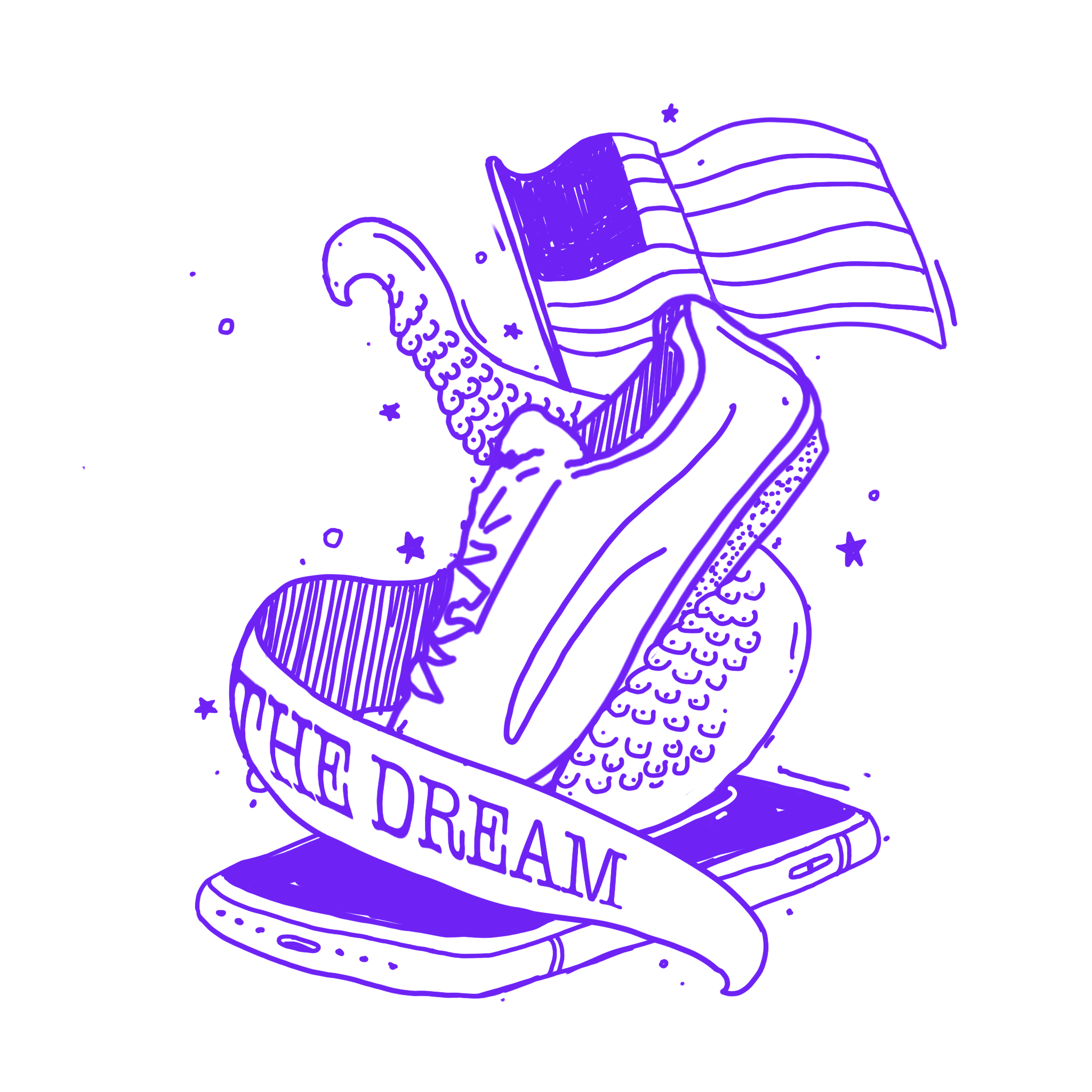In the beginning… humankind told stories. Even the start of the world is told through a variety of cultural and religious creation stories. The Epic of Gilgamesh is over 4,000 years old, followed by Greek tragedies and English plays. Fast forward, and we have Steinbeck and Baldwin and Morrison and Robinson.
At night while tucking the kids into bed, you probably read about a moose hungry for a muffin or a pigeon that wants to drive a bus. It’s no wonder author Jonathan Gotschall claims that “we are, by nature, suckers for stories.” We are hardwired for stories since the beginning of time and individually formed by them before we could even walk.
Businesses eventually picked up on the idea of story, and the how-to market flooded itself with books and workshops, all designed to help brands tell a great story. This is all good and helpful; as a business leader, you should tell a captivating story.
But when building a brand, storytelling is not enough.
The power of narrative
My grandfather grew up in a small mountain town in Virginia. His childhood home was without electricity or running water. In the 4th grade, he dropped out of school and went to work alongside his dad and brothers.
In 1941, at the height of World War II, he walked into the local U.S. Army recruitment office and enlisted for service. Only 17 at the time, he lied about his age in order to join his fellow Americans in the war effort.
After the war, he made his way back home, married my grandmother, and educated himself by buying a set of encyclopedias and reading them front to back, A-Z. He owned and operated a small grocery store in the center of town, which he eventually sold before taking a job delivering mail as a postal worker. Throughout the course of his life, he and my grandmother built a home in the country, raised three daughters, visited all 50 states, and helped start a small Baptist church that still exists today. He died living a full life.
“[The American Dream is] of a land in which life should be better and richer and fuller for everyone, with opportunity for each according to ability or achievement.”
James Truslow Adams
Ten years before my grandfather lied about his age, historian and writer James Truslow Adams defined the American Dream. He said, “[The American Dream is] of a land in which life should be better and richer and fuller for everyone, with opportunity for each according to ability or achievement.”
So, when my grandfather joined the Army, he wasn't just fighting "the bad guys." He was fighting for an idea. An idea everyone born in the U.S. knows as The American Dream. My grandfather fought for this idea, and after the war he lived it out behind a white picket fence with a happy family and a full pension.
The American Dream is a great example of a cultural narrative. This particular narrative is so powerful that people fight for it, they flee oppressive countries and take perilous journeys to take part in it, they give their lives to public service to preserve it, and while eating turkey and cranberry sauce they argue with Aunts and Uncles about what it means. In a very real way, this narrative defines much of our society and how we view the world.
The power of narrative as meaning container
Much of life feels like a series of random and disconnected events all strung together by time: quit school in 4th grade, joined the Army, ran a grocery store.
Narrative connects the dots of these events into a bigger picture. Through a connection point, the random events start to take on a meaning. As an example, if you believe in the American Dream, then you have a very particular view of the world that allows you to easily understand the events of my grandpa’s story in relation to one another. It’s not hard to believe that someone could drop out of school in the 4th grade and also run a business.
The meaning provided by narrative extends beyond ones personal life. Any particular narrative can also give meaning to the world around you, providing context for how the world ought to work. As a believer in the American Dream narrative, you might form a point of view on political structures, economic opportunity, the things you value, how to define success, and on and on.
The power of narrative as claim maker
Keeping with our American Dream example, let’s look back at the definition by Adams: “[The American Dream is] a land in which life should be better and richer and fuller for everyone, with opportunity for each according to ability or achievement.”
In the definition, we see that the narrative offering two powerful points. The first point is a claim. The claim of the American Dream Narrative is that opportunity is available to everyone. So, in American Dream it does not matter who you are or what your social standing, you have an opportunity for achievement in front of you.
The second point we see is a promise. The claim that the narrative makes carries with it a promise. In the instance of the American Dream, believers of that narrative are promised a better, fuller, and richer life.
The power of narrative as invitation extender
The power of a narrative only goes so far unless you chose to participate in it. The claim and promise of a narrative are empty without active participation. The promise cannot be fulfilled unless you do something.
Narratives then extend an invitation and allow you the chance to take part in its claims and promises. Back to the American Dream and my grandpa, you only get a chance at that better, fuller, and richer life if you do something: fight in a war, read the Encylcopedias, start a store.
The narrative’s ability to invite you in makes it participatory and alive. The narrative is not something happening in some other time and place to some other person. But instead, the narrative is unfolding around you and you can also be a part of it.
What is a story?
Now that we have a better understanding of narrative and its power let’s go back to story. A story is exactly what you remember from high school english, it has the 4Ws: the who, what, when, and where of an instance along with a beginning, a middle, and an end. I told you the story of my grandpa. It had a beginning (born in a tiny town), a middle (joined the war), and ending (he died) and answered the 4Ws of his life.
When we compare a story to a narrative we can see some big differences:
A story already happened: If you are listening to a story it already happened. Otherwise, it would have no ending and not be a very compelling story.
A narrative is ongoing: A narrative is alive and dynamic, unfolding over time.
A story happened to someone else: When you hear a story, it is normally about someone else. You aren’t in it.
A narrative invites participation: A narrative includes you.
Even though the story and narrative are different, they need each other. A story is what helps prove out and validate the claims and promises of the narrative. The story of my grandpa, and thousands of others stories just like it, prove that the American Dream is a real thing. You believe in the narrative because you have heard stories that prove it true.
Counter narratives
Not every narrative is believable. Some dominant narratives are disputed through alternative stories and experiences that challenge the validity of the narrative’s claims and promises.
We see this with the American Dream example. You might have an alternative experience or know plenty of people who have not seen the fruits of this “land of opportunity.” So if the American Dream is a dominant narrative, then we find along side it a counter narrative.
A counter narrative gives meaning to the oppressed, helping make sense of their status and struggles.
Counter narratives are just as powerful as dominant narratives and they work in the same way. They give meaning, make a claim, and invite participation. Based on Fredrick Douglass’s 1852 speech, we might call the counter narrative to the American Dream the “Not My 4th” narrative.
This counter narrative gives meaning to the oppressed, helping make sense of their status and struggles. It makes a claim that there is a way out (equality) and offers a promise of true freedom. And, just like the counter narrative, there is an invitation to participate (protesting, voting, etc.)
All of this is proven out through another set of stories: 40 Acres and a Mule, Redlining, Dr. King, the People’s Free Food Program, George Floyd, and countless others.
We are all living into a set of narratives
The American Dream is a huge dominant cultural narrative that, agree or disagree; we can all understand. But, there are equally powerful narratives happening all around us offering their own forms of meaning, making their own claims with promises, and extending invitations for us to participate.
College: My family believed in education as a way to advance yourself. With a college degree, you could earn a better salary which would lead to success and satisfaction in life.
Scale, Speed & Progress: In the business world, we have a narrative that says bigger is better. Efficiency is good and all of this leads to more productive and profitable businesses.
Consumption: If we buy things, we will be happy. The good life is available to us through our purchasing power.
Shop Local: Stay out of the big box stores and online shopping. If you shop locally, you are supporting people in your community, its better for the planet, and your town will be a more rich and vibrant place
Each of these narratives have some degree of power. A power that forces you to buy something you don’t want or to show up to an 8:00am class. That power is bolstered by a claim and promises of the particular narrative—a better job, the good life, profits, vibrant community. And each of these examples is happening in a different sphere of daily life, whether it be culturally, institutionally, within a certain industry, or something specific to our family or community.
The power of narrative is all around us, influencing the way we shape our entire lives and compelling us to act in certain ways.
Good brands use story. Great brands use narrative.
The power of narrative that shapes every aspect of our lives can also be tapped to draw your audience into your mission.
Let’s look at a few examples you will recognize and some from our work at FiveStone.

Nike: Bill Bowerman, the Co-Founder of Nike once remarked, “if you have a body, you are an athlete.” This sentiment, along with the idea that any barrier can be broken sums up the Nike narrative. Nike’s infamous “Just Do It” tagline is a brilliant expression of the idealogy that athletes are not special people with special equipment and you two can achieve whatever you set your mind to. So Nike’s narrative is something like:
Claim: anyone is an athlete
Promise: you can achieve any goal you have, any barrier can be broken
We see this in story after story (through commercials and ads) that NIke tells from the famous Revolution ad of the 80s to the more recent Dream Crazier campaign.

Apple: Like, Nike, Apple appeals to our individual desire for achievement. For Apple this centers on a desire to create. Starting with their famous 1984 commercial (a story) they have constructed a narrative that tells us we are not bound by the rules of society but instead we can are unique individuals, who can break free and express ourselves.
Claim: you are meant to create
Promise: you can be free to express yourself

Matchbook: FiveStone client, Matchbook Learning goes into the bottom 5% of schools in the country and turns them around. These schools are in some of the most economically depressed zip codes in the nation and the dominant narrative tells the community that their school isn’t great, it won’t help your kids, and there are no opportunities in this community for the next generation.
We created new counter narrative that allowed the parents and students to dream and to imagine a new future. We told stories of hope and success for the students.
Claim: everyone has a dream for when they grow up
Promise: we can help you achieve your dream and you can be whatever you want

Hearing First: In almost all states, when someone gives birth, the baby recieves a Newborn Hearing Screening to test the babies ability to hear. The screening is not something moms are thinking about during pregnancy as being important and, in all the post-delivery excitement, the results are often missed. But, knowing the results are important for healthy brain development.
We worked with Hearing First to develop a narrative that made newborn hearing less about a medical test that wasn’t that important and turned it into a catalyst for helping your baby reach their full potential.
Claim hearing is important for brain development
Promise knowing the screening results can help your child live their full potential
**********
The power of narrative is real and it shapes much of our everyday lives, giving us a sense of meaning and inviting us into something bigger than ourselves. That same power that shapes culture, industries, and communities can also be used to draw people into our work.
While stories are an important part of narrative, they will not get your brand far enough. Narrative acts as an overarching ideal that all your stories and brand efforts can live under to give your audience a deeper resonance with your organization.
The FiveStone team is now part of Whiteboard.
Since 2001, we have worked with some of the most courageous organizations on the planet. We've walked alongside these organizations by offering strategy, branding, and campaigns to bring about positive change in the world.
As we think about how we might continue to live out our mission—“amplifying positive impact”—over the years ahead, we are excited to announce that we are joining forces with Whiteboard.
Whiteboard is an award-winning creative agency and Certified B-Corp. Like FiveStone, they believe in the power of Design to make the world a better place. It is clear to us that by bringing together the power of our strategic focus with their strong digital offering, we can truly build—as Whiteboard says—”the world that ought to be.”
We are thrilled to join Whiteboard and cannot wait to bring Whiteboard’s full suite of services and offerings to all our partners.
See more about Whiteboard here or visit the archived FiveStone site here.
